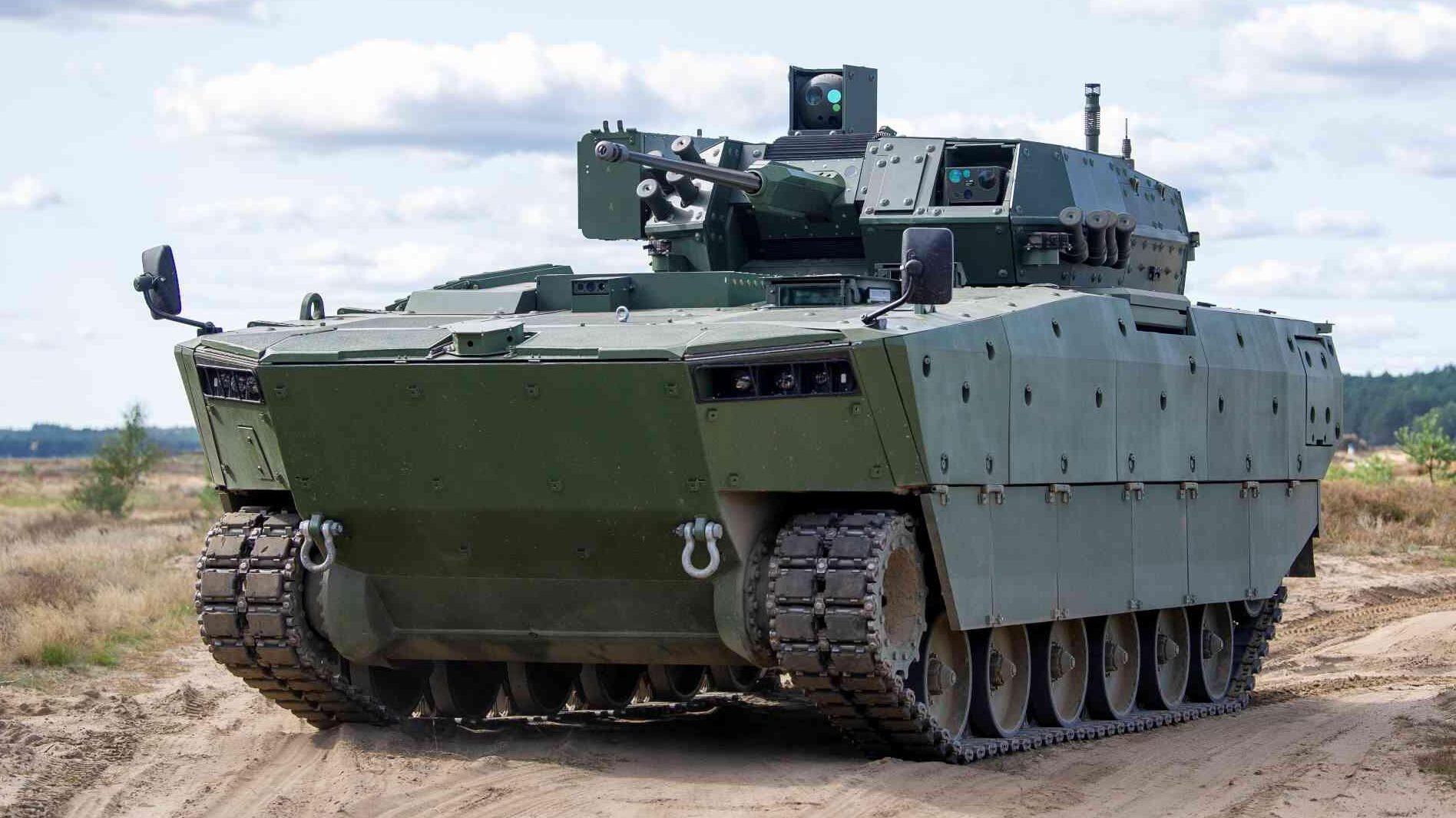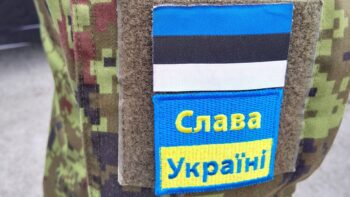
NBPWP Borsuk prototype during trials on military training area. (Polish Ministry of National Defense)
WARSAW — As it continues to splash cash around on new armaments, Poland has signed a framework agreement to purchase almost 1,400 tracked infantry fighting vehicles, known as the Borsuk — Polish for “badger.”
At an event featuring Poland’s Deputy Prime Minister and Minister of National Defense Mariusz Błaszczak, a framework agreement was concluded between the MND’s Armament Agency and the consortium of Polska Grupa Zbrojeniowa and Huta Stalowa Wola for the supply of over 1,000 new Borsuk amphibious infantry fighting vehiclesm, as well as over 300 specialist vehicles based on the Borsuk chassis design. Those specialist vehicles include Żuk tracked reconnaissance transporters, Oset tracked command vehicles, Gotem medical evacuation vehicles, Gekon armored recovery vehicles and Ares NBC reconnaissance vehicles.
The agreement continues a series of major investments in Poland’s armed forces since Russia’s invasion of Ukraine. In December, Poland’s top general told Breaking Defense he is looking to spend further, stating “We just took our suitcases with money and [are] going like hell around the world and trying to buy,”
It’s important to note this is a “framework,” not a final deal, meaning per unit costs or total numbers of vehicles might shift down the road. While an official price tag has not been set, the expected cost could reach several dozen billion zlotys, while the deliveries of the first vehicles are planned for 2024-2025.
Wicepremier @mblaszczak zatwierdził umowę ramowa pomiędzy Agencją Uzbrojenia a konsorcjum firm @PGZ_pl i Huta Stalowa Wola na dostawy bojowych wozów piechoty #BORSUK. pic.twitter.com/gJVudNnIrb
— Ministerstwo Obrony Narodowej 🇵🇱 (@MON_GOV_PL) February 28, 2023
“The time of the [ex-Soviet BWP-1] IFV, which is still used in the Polish Army, has passed. Now the era of NBPWP Borsuk has come. What has just happened, the approval of our framework agreement on the order for 1,400 Borsuk [family] infantry fighting vehicles for the needs of the Polish Army, was described as the largest project of the Polish defense industry in 50 years,” said Błaszczak during the event.
Borsuk is characterized by high mobility and the ability to overcome terrain obstacles, including water obstacles, and can be operated in various climatic conditions. The maximum speed on paved roads is 65 km/h, and in the water is 8 km/h, while the combat weight of the vehicle in the basic variant is 28 tons. Operation requires a three-man crew of commander, weapons operator and driver, and the vehicle is designed to transport six soldiers to the battlefield.
The design is equipped with an indigenously-produced ZSSW-30 remotely controlled turret system, developed by HSW together with WB Electronics. The main armament of ZSSW-30 is the 30mm Bushmaster Mk.44S automatic chain gun, able to fire with five different types of ammunition, including programmable ammunition. The auxiliary armament, integrated with the turret, is a modified 7.62mm UKM-2000C machine gun coupled with the cannon, as well as double anti-tank guided missiles launchers. Currently, the Spike-LR ATGM launcher has been integrated into the turret, but integration with the Javelin ATGM is also being considered in the future.
The qualification tests of the Borsuk prototype began July of last year and are still ongoing. Deliveries of four additional prototypes, for operational trials, should take place by the end of June this year. The results of these tests will affect the final configuration of the Borsuk and the vehicle development in the subsequent production tranches.
It is believed only when this happens will it be possible to conclude executive contracts for the delivery of chassis and subsequent ZSSW-30 turrets. Separate executive contracts will probably also be required for the development of specialized versions of the Borsuk.
According to a MND release “NBPWP Borsuk will cooperate very effectively with [Land Forces] units equipped with the Korean K2 main battle tanks, which will be delivered to, among others, 16th Mechanized Division”.
BWP #BORSUK będzie bardzo skuteczne współdziałał z pododdziałami czołgów rodziny K2, które wejdą na wyposażenie m. in. 16 Dywizji Zmechanizowanej. BORSUK charakteryzuje się wysoką mobilnością i zdolnością do pokonywania przeszkód terenowych, w tym przeszkód wodnych. pic.twitter.com/TfZV0iWDx5
— Ministerstwo Obrony Narodowej 🇵🇱 (@MON_GOV_PL) February 28, 2023
The start of the Borsuk program was aimed at replacing the Soviet-era BWP-1 IFVs in the mechanized battalions of the Polish Land Forces. Over 1,100 BWP-1s, delivered from 1973-1988, still form the backbone of 18 battalions (including one in the process of forming and three that are to be eventually equipped with Rosomak APC) — meaning the announced procurement will effectively be a one-for-one swap of the older Soviet equipment.
But looking at the planned increase the strength of the Polish Armed Forces by two additional divisions to six, and the increase in the number of brigades in a division from three to four, as well as the increase in the number of combat battalions in brigades from three to four (which is currently only the case of the 18th Mechanized Division) it is believed the demand may increase over time by several hundred more Borsuks .
Błaszczak also used the event to announce the approval by the Technical Modernization Council of a new , heavier IFV project, which will also be entrusted to Huta Stalowa Wola.
“The project of preparation [design] and then production of an IFV heavier than NBPWP Borsuk, […], which will consist of two basic elements, the [155 mm self-propelled howitzer] Krab chassis, which is manufactured here at HSW under a Korean license, and the ZSSW-30 remote controlled turret. […] This heavier version of Borsuk will be the basic equipment for the 18th Mechanized Division, so it will cooperate with the Abrams main battle tanks, in which 1st Armored Brigade of the 18th Mechanized Division will be equipped this year.”
Unofficially, it is believed orders for such a vehicle will be placed by the Armament Agency later this year.
Taking aim: Army leaders ponder mix of precision munitions vs conventional
Three four-star US Army generals this week weighed in with their opinions about finding the right balance between conventional and high-tech munitions – but the answers aren’t easy.


























